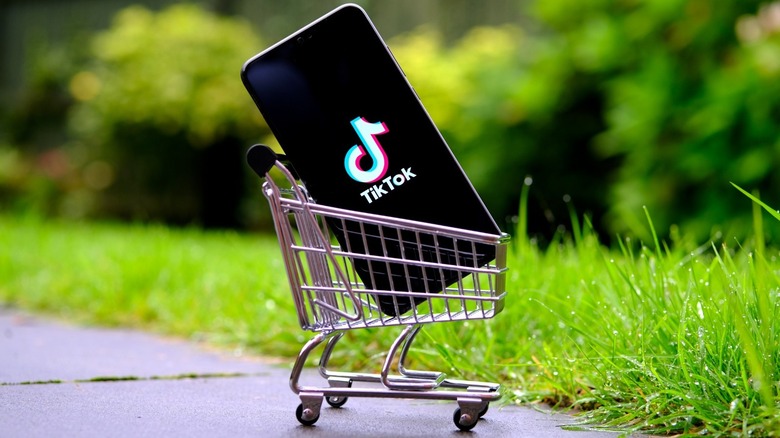The Reason TikTok Could Be Behind Some Of This Year's Food Shortages
2020 and 2021 have been dominated by shortages and issues with the global supply chain. 2020 may be remembered for the sudden hoarding of toilet paper, and 2021 will always have the image of the Ever Given blocking the Suez Canal, thus disrupting huge portions of the world's economy. Of course, the pandemic was the primary culprit behind the continuous shortages. But there is another aspect that hasn't received nearly enough attention, and that's TikTok.
As Eater noted earlier today, TikTok trends have fueled sudden spikes in demand for Kewpie mayo, Feta cheese, and Ocean Spray Cran-Raspberry juice among others. Stores already struggling to stock themselves for regular activity cannot keep up with the whims of viral videos. They sell out.
The effect of virality isn't being overstated here. Take, for example, Applebees. As CNN reported in August, the casual dining brand saw its sales exceed even pre-pandemic levels due to the song "Fancy Like." In the song, a couple goes on a date to Applebees. "Relative to 2019, Applebee's posted its best quarterly [same-store] sales performance in over a decade," John Peyton, CEO of Applebee's parent company Dine Brands Global, said.
The shortages may push adoption of technology
It appears that to effectively ride the wild waves of trends, stores will have to accommodate some technology to crunch real-time data.
09 Solutions, one company trying to sell these platforms, describes real-time data as data gleaned from sources that continuously produce trending data, such as Netflix or social media. Beforehand, stores would rely on the data generated by their own sales. They'd see what sold and what didn't. But if all it takes is Emily Mariko spreading some mayonnaise on her food for an entire brand to receive such demand, you can't solely rely on what you've sold before.
Even people who aren't trying to sell something, like the Progressive Grocer, expect the integration of AI to be a major innovation of 2022. In the ideal example, they explain, a store can use a program to register potential demand based on its presence on social media to adjust for pricing and stocking.
Walmart is already doing something of this sort in their meat section. As Robo Global details, Walmart installed Wi-Fi-enabled cameras in their meat section to use real-time data to increase their stocking efficiency by 90 percent. Supply chain problems and TikTok trends will remain with us for the foreseeable future, but stores will adapt to the uncertainty.

